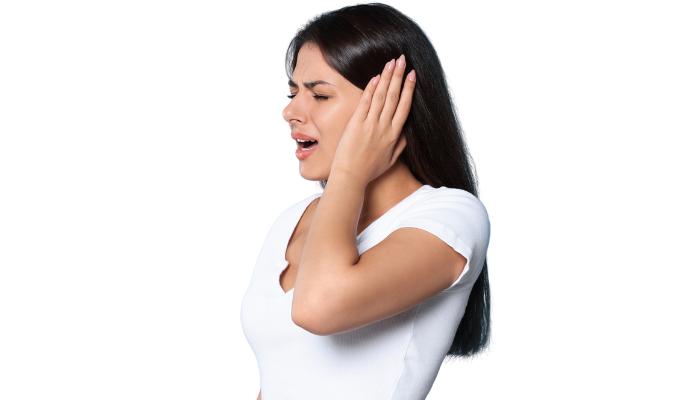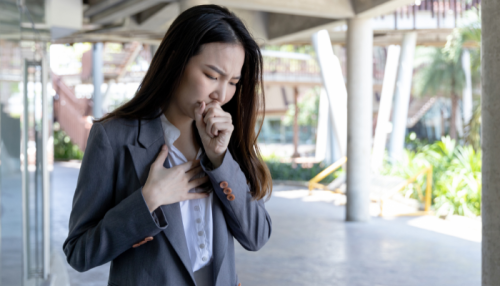Perforated eardrum: causes, symptoms and duration

Reading time: about 4 minutes
A perforated eardrum occurs when the tympanic membrane is lacerated or ruptured. A perforated eardrum is in fact a traumatic rupture of the tympanic membrane, a thin structure that separates the inner ear from the middle ear. Let's see why this can happen, the short-term consequences and how long the tympanic membrane rupture lasts.
Why is the eardrum so important?
The eardrum plays a fundamental role in the auditory system because it is involved in the amplification of sounds picked up by the ear pinna and their transmission to the inner ear. The eardrum allows the auditory system to convert sounds into impulses, which are then transmitted to the auditory nerve for processing and interpretation. The tympanic membrane and the set of 'ossicles' work synergistically to perform this translation into auditory impulses.
The eardrum therefore performs two important functions:
- Conduction of sound: it provides the surface for the collection of sound and vibrates in response to it. When sound waves hit it, the eardrum vibrates, initiating the process of translating sound waves into nerve impulses.
- Protective barrier: separates the outer ear canal from the middle ear, protecting its delicate structures from the entry of pathogens, water and other foreign substances.
Main causes of a ruptured eardrum.
- Otitis media (middle ear infection): this infection often causes the accumulation of fluid in the middle ear area. The pressure of these fluids can cause the eardrum to rupture.
- Barotrauma: is the stress exerted on the eardrum when the air pressure in the middle ear and the air pressure in the environment are unbalanced. If the pressure difference exceeds a certain limit, it can lead to perforation of the eardrum. This condition is often caused by rapid pressure changes in the ear such as a blow to the ear or a dip in water. Other events that can trigger sudden pressure changes, potentially leading to eardrum rupture, include scuba diving without adequate compensation mechanisms or direct trauma to the ear, such as impact with a car air bag.
- Ear trauma: a close explosion can cause rupture of the eardrum.
- Foreign bodies in the ear: some objects, such as cotton buds for ear hygiene, can cause a perforation of the eardrum.
When the eardrum is perforated, hearing in the involved ear may be partially or completely compromised. The severity of the hearing loss depends on the size of the laceration: a minor lesion causes a limited decrease in hearing, while more extensive damage may cause more significant deafness. Generally, however, this hearing loss is temporary and transient; hearing is then restored once the eardrum has healed.
Symptoms that may indicate a ruptured eardrum:
- Recurrent otalgia: pain in the ear especially when water enters.
- Otorrhea: loss of fluid from the ear. In most cases, this is an inflammatory exudate, either serous, serohaematous, mucous or purulent.
- Otorrhagia: discharge of traces of blood from the ear.
- Tinnitus: the perception of a noise, usually a ringing, whistling, rustling or hissing sound, heard in the ears or head in the absence of an external acoustic stimulus.
- Progressive hearing loss.
- Dizziness.
- Fever.
- Itching.
Fever and itching are commonly signs of a perforation of the eardrum caused by an infection, as in otitis media. In particular, in purulent otitis media, there is an accumulation of pus that exerts pressure on the tympanic membrane until it ruptures. When this happens, the pus is drained outwards, leading to a sense of pain relief. Paradoxically, if one experiences sudden relief during an episode of otitis media, it is likely that the condition has actually worsened.
Perforated eardrum: how long does a ruptured eardrum last?
The tympanic membrane has the ability to regenerate and heal spontaneously, so a perforated eardrum in most cases is a problem that tends to resolve itself within a few weeks or months, without the need for specific therapy.
During this recovery period, it is possible to feel a slight pain in the ear, a sensation of a wadded ear, tinnitus and a temporary loss of hearing.
The most important precaution to be taken is to keep the ear dry and avoid allowing water to enter. This is because without the eardrum protecting the inner ear, pathogens can easily pass through it and cause infection, using water as a vector.
However, there may be situations in which the perforation of the eardrum is very large, in which case surgery may be necessary. In the case of persistent ear pain, therefore, an ear specialist should always be consulted for a thorough evaluation. A doctor will be able to carefully examine the symptoms, collect the medical history and, if necessary, prescribe specific tests to precisely identify the cause of the eardrum rupture. Medical advice is essential to ensure appropriate treatment and facilitate an optimal healing process.
ATTENZIONE: Le informazioni riportate in questa pagina provengono da Fonti aziendali e sono pubblicate dopo attente verifiche delle fonti, scelte con cura e per quanto possibile aggiornate ed ufficiali, ma non devono essere considerate informazioni complete e universali, né è possibile garantire l’assenza di errori e la correttezza delle informazioni divulgate.
Testi, immagini, foto e disegni relativi a Dispositivi Medici e Presidi Medico-Chirurgici contenute in questa pagina non hanno carattere né natura di pubblicità e si rivolgono ad un pubblico clinicamente informato. Otosan srl ha la facoltà di apportare eventuali modifiche alle informazioni pubblicate senza darne avviso preventivo. È vietata la riproduzione al pubblico se non per uso strettamente personale e non pubblico.








